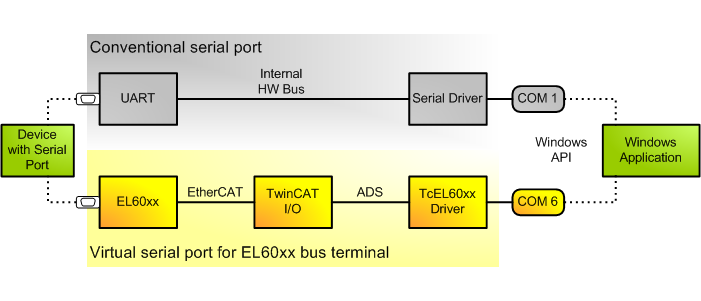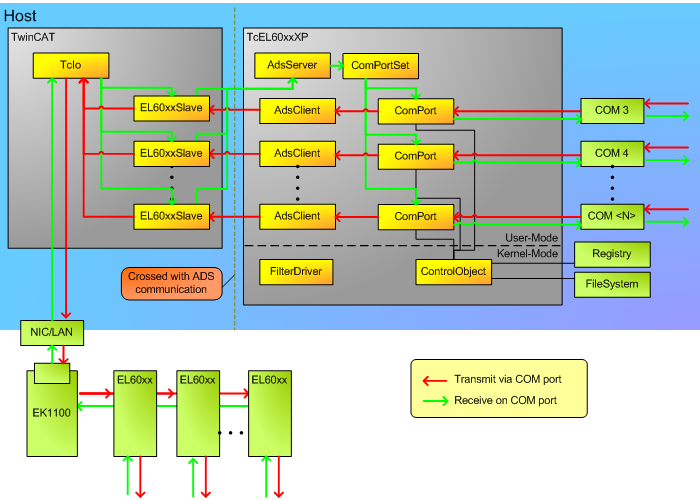Architecture
Considering a conventional serial port the driver communicates with the UART chip through an internal hardware bus. In case of the TwinCAT-Virtual-Serial-COM-Driver this communication is implemented using ADS and EtherCAT protocol.

When the driver is installed on a computer, it instantiates an ADS server with fixed port number, the so-called TcEL60xx-AdsServer. This ADS server provides an ADS interface to create serial COM ports. Within the TcIO driver EtherCAT slave objects are the clients of the TcEL60xx-AdsServer. TcIo has a special class of EtherCAT slave objects that are created for each EL60xx bus terminal on TwinCAT start. They have the capability to transmit data packets from the TwinCAT-Virtual-Serial-COM-Driver to the bus terminal, and to receive data from the bus terminal which is in turn forwarded to the driver. The driver will forward it to a Windows application which has a pending read on the respective serial port.
The following image illustrates the architecture for the Windows XP driver variant.
